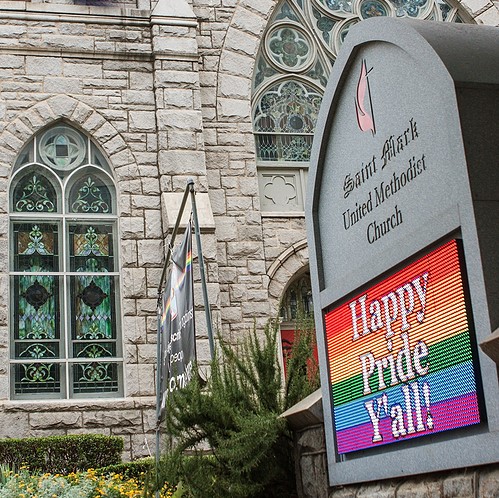
The Speed of Change
As we know, change is inevitable. Technological change, while giving us access to an abundance of information and tools that a decade ago we wouldn’t have thought possible, is happening faster than ever. While this rapid rate of change can be exciting, in our churches and congregational settings it can feel overwhelming to navigate a constantly shifting landscape.
The younger members of our congregations have embraced technology since early childhood. They grew up with iPads and phones. They read books on Kindles. They use laptops at school. They’re accustomed to navigating more change in a few months than many of us have encountered in our lifetimes! Is it any wonder that they can’t understand how we, as the church, are still debating whether it’s ok to sing songs out of “new” hymnals or to give gay and transgender people positions of leadership?
Quantum physics has shown us that observing changes the things being observed. Yet, we say that Jesus is the same yesterday, today, and forevermore. We tend to interpret this verse as something about the objective, unchanging nature of Jesus and, by extension, the church and morality. But our views of Jesus, the church, and morality will vary greatly depending on our circumstances, and our acceptance of change.
While that would seem to drive us farther apart, quantum physics is where science and spirituality converge. It has affirmed what we have known spiritually: Not only are all particles in the universe interconnected, but so are all humans—indeed, all of creation. More than that, since consciousness is the stuff of the universe, we are all deeply linked to the Source of All Life, our Creator, and the whole creation. And technology can facilitate and increase that spiritual connectedness!
Here’s the trouble. Church culture still functions as if we are living in Newtonian, maybe even biblical times. “If the King James Bible was good enough for Jesus, then it’s good enough for me!” But the world has moved on. Most young people consider themselves to be “spiritual.” But they have little to no experience with “organized religion” nor, often, do they want that experience.
The speed of change has taken on new relevance since the COVID-19 global pandemic. Suddenly, if churches were to continue to serve people, they found they had to quickly move online, including worship, giving, Bible study, pastoral care, and fellowship. With this quick shift, more people could participate in the church’s life. Even as social distancing kept people physically apart, the rapid spread of the virus and the intimacy of connecting almost anywhere online through video have emphasized our interrelatedness. I write about how to build on the changes the pandemic wrought in Forging a New Path: Moving the Church Forward in a Post-Pandemic World.
Back to in person worship means it’s even more important for the church to wake up, smell the coffee, and embrace change! As we look forward with hope and courage into the future, let us remember that we have a unique opportunity to create an even better world than what has come before. We can do this by acknowledging our interconnectedness with one another and with God, by learning to trust the wisdom of our young people, and by creating spiritual communities that are open to change.
Even if that change sometimes moves us outside of the constraints of “organized religion.” Especially when working within our communities.
All of this requires a willingness to let go. We must be willing to let go of our need for control and certainty and, instead, explore the unknown. We must open ourselves to the transformative power of love and grace.
It is time for us to step boldly into the future, trusting that God will be with us – especially if we are willing to embrace a new paradigm of the interconnectedness of all things and let go and adapt to the new normal. This is how we will create a new Christianity that is alive, vibrant, inspiring, and relevant for all ages.
If you want to learn more, check out my latest book Forging a New Path:Moving the Church Forward in a Post-Pandemic World. In it, you will learn practical steps to move the church forward into a new era of unity, understanding, and love.
Copyright © 2023 rebekahsimonpeter.com. All Rights Reserved.

 garnered lots of buy-in. Trees and fencing were donated. A spring Saturday was set for planting the trees. Folks were excited! Lots of trees got planted that day. Sadly, almost none of them survived.
garnered lots of buy-in. Trees and fencing were donated. A spring Saturday was set for planting the trees. Folks were excited! Lots of trees got planted that day. Sadly, almost none of them survived.